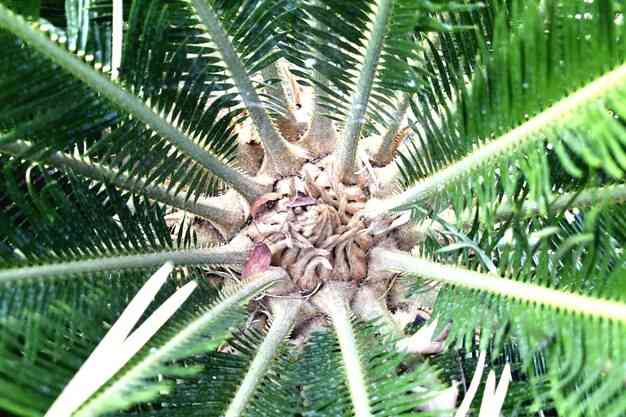In groundbreaking research focusing on the ‘odorant receptor palm weevil esters’, scientists have made significant strides in understanding how the Asian palm weevil (Rhynchophorus ferrugineus) selects palm trees as hosts, a critical aspect of its survival and proliferation. This pest, notorious for its devastating impact on palm cultivation globally, primarily targets palm trees by utilizing specialized odorant receptors that detect specific volatile compounds emitted by these trees. Prior studies have characterized only a handful of these receptors, leaving a significant gap in the comprehensive mapping of the chemosensory pathways involved.
The research, led by Binu Antony and a team of international scientists, explores a newly identified odorant receptor, RferOR2, which is prominently expressed in the weevil’s antennae. Utilizing advanced transcriptomic techniques and phylogenetic analysis, the study situates RferOR2 within a significant clade of coleopteran odorant receptors and illustrates its tuning to ethyl and methyl esters—key volatiles emitted by palm trees. This receptor’s response diverges from that of other known receptors, ignoring common pheromone signals but showing sensitivity to ecologically relevant palm odors.
This research not only advances our understanding of the Asian palm weevil’s host selection mechanism but also underscores the potential of leveraging specific odorant receptors to develop improved pest management strategies. By integrating synthetic palm ester volatiles with traditional pheromone traps, the study demonstrates a novel approach that could enhance the efficacy of mass trapping, presenting a sustainable solution to mitigate this pest’s impact on palm agriculture.
### Background: Understanding the Menace of the Asian Palm Weevil
The Asian palm weevil, Rhynchophorus ferrugineus, has long been recognized as a formidable pest, causing significant damage to palm plantations across the globe. These insects selectively infest palm trees by detecting specific volatile compounds that the trees emit. Previous discoveries highlighted only a limited set of odorant receptors involved in this process, leading to a gap in fully understanding the weevil’s chemosensory navigation systems. The groundbreaking research by Binu Antony and his team focuses on expanding knowledge about these receptors, particularly through the study of a newly identified receptor, RferOR2. This research is vital due to the weevil’s growing resistance to traditional pesticides and its rapid proliferation in tropical and subtropical regions, posing threats to both biodiversity and economy.
### Methodology: Advanced Techniques to Unravel Chemical Detection
To probe deeper into the Asian palm weevil’s olfactory system, the research team employed advanced transcriptomic techniques, which involved sequencing the RNA from the weevils’ antennae to identify active genes responsible for odor detection. This method helped in pinpointing the specific genes encoding the odorant receptors, particularly focusing on the newly discovered RferOR2. Furthermore, phylogenetic analysis aided in positioning RferOR2 within the broader evolutionary context of coleopteran receptors, helping to discern its ancestral traits and functional divergences. The team also conducted electrophysiological experiments to test the responsiveness of RferOR2 to various ester compounds, critically focusing on those volatiles predominantly emitted by palm trees.
### Findings: Unveiling RferOR2’s Unique Functional Profile
The study successfully illuminated the unique aspects of the RferOR2 receptor in the Asian palm weevil. Unlike other studied receptors, RferOR2 exhibits a strong sensitivity to ethyl and methyl esters—key volatiles released by palm trees. Notably, this receptor does not respond to the common aggregation pheromones used by the weevils but is finely tuned to detect environmental odors associated with potential host plants. These discoveries are pivotal, as they underline a more complex mechanism of host selection involving not just pheromones but also specific ecological cues.
### Implications: Toward Innovative Pest Management Approaches
The insights gained from studying the odorant receptor palm weevil esters, particularly RferOR2, open new avenues for managing the pest more effectively. By understanding the specific chemical cues that attract weevils to palm trees, researchers can develop targeted control methods that could disrupt the weevil’s host-finding process. The idea of integrating synthetic ester volatiles with traditional pheromone traps could revolutionize how these pests are managed, potentially reducing reliance on harmful pesticides and fostering more sustainable agricultural practices.
### Conclusion: Future Directions and Sustainability
The study not only sheds light on the Asian palm weevil’s olfactory preferences but also sets a foundation for future research that could focus on other receptors and their role in the pest’s behavior. Ongoing research into odorant receptor palm weevil esters will likely uncover more such receptors, each contributing to a fuller understanding of the weevil’s sensory capabilities. This knowledge is crucial for developing integrated pest management strategies that are both effective and environmentally benign. The future involves rigorous field testing and refinement of the prototype traps laced with synthetic attractants, pushing forward towards a sustainable solution for palm agriculture worldwide.
#### References
1. [FAO – Impact of Rhynchophorus ferrugineus](https://www.fao.org/home/en/)
2. [ResearchGate – Transcriptomics in coleopteran pests](https://www.researchgate.net/publication/322222772)
3. [Phylogenetic Analysis Techniques](https://www.nature.com/articles/nrg1701)
4. [ScienceDirect – Pheromone Communication in Weevils](https://www.s









